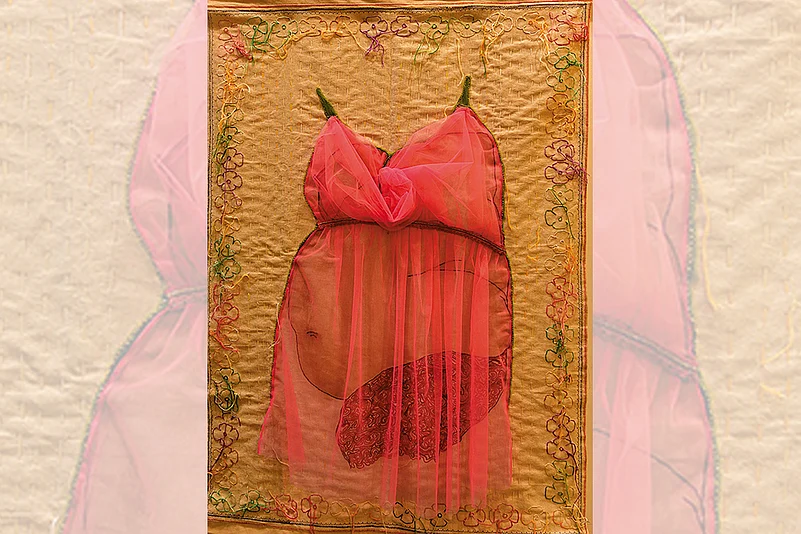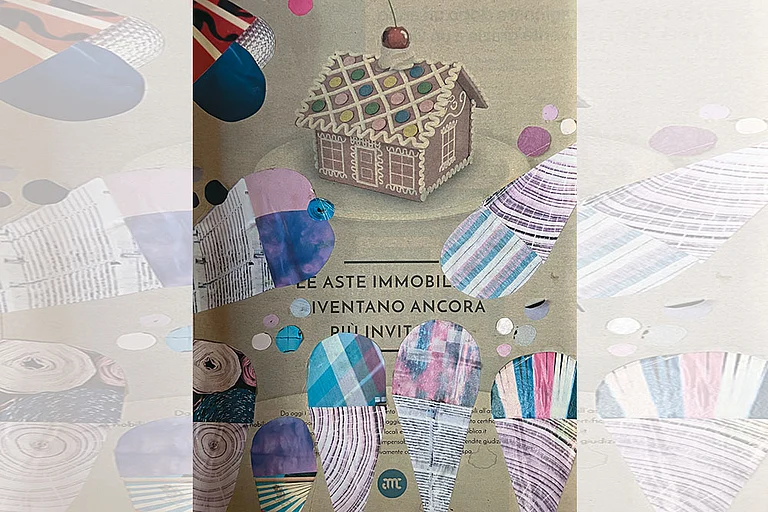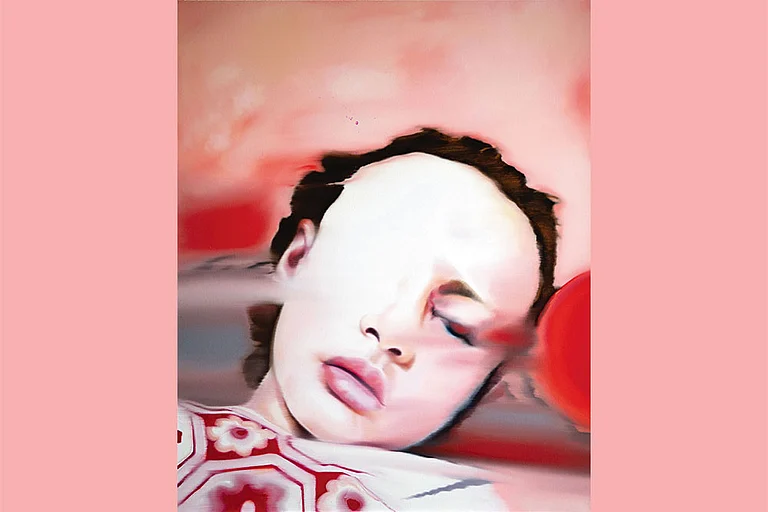In her newly-acquired status as great-grandmother, my mother decides to let her hair show its true grey.
Until now, my mother has refused to grow old. At 85, when she arrives at this momentous decision, her hair is coloured jet black, a practice she had started in her twenties on discerning the first silver whispers of premature greying. Her secret weapon came packaged in a flimsy paper box the size of a packet of cigarettes, branded as ‘Moon and Star hair dye,’ and succeeding generations found space in her bathroom closet till the advent of a more glamorous-looking foreign brand sent the moon and its star beyond the horizon.
Like many women of her time, my mother’s face is almost unlined through eight decades, and though she has stopped using lipstick, the only makeup she has ever used, she continues colouring her hair more out of habit rather than vanity; even inculcating my father into the ceremony, when a frozen shoulder prevented her from doing it herself. It gives her the dubious privilege of being the only one, among all her many siblings and relatives, who is not sporting a halo of grey.
The grey that has now settled on her 86-year-old head ages her in our eyes. And in her own, too, when she looks into the mirror; for her entire demeanour seems older by years in just a few months.
Perhaps that is why women fight the signs of ageing that time and gravity relentlessly draw on their faces and bodies. They want to be perceived as still being able enough to stay in the thick of things. And perception starts with that first look in the mirror every morning.
The perspective has changed. Earlier, women tried keeping signs of ageing at bay because looking progressively older reminded them of the ticking clock of their mortality. Today, they try to look young for a host of other reasons.
In a world that has invested heavily in chauvinism, the importance of looking good and seeming young is undeniable. Not just to keep the man in her life interested, but, as longevity increases with every generation, to hold her own among family and peers. The insecurity that comes with growing years is related to a fear of becoming irrelevant and living endlessly on the fringes.
It’s makeover time for the older woman. That implies the whole package—hair, skin, teeth, nails, body, feet, clothes, et al. And why not? It’s her due, her chance to love herself.
Then there are other reasons. Looking good also implies one has the means to do so, that the toils of daily life are not such that can get one down. Beauty is its own reward, and if beauty can be bought, so much the easier. So bring on the potions that can do the magic.
Exactly! Science and competition work together to find new mantras to make women believe they can remain 35 forever. Even as the mature woman sits back to sigh with satisfaction at her achievements, be it a happy home or her niche in the work arena, the serpent of doubt sneaks in to whisper to her about her failing looks; presenting her face as a contrast to the airbrushed, perfect images of faultless peaches-and- cream skin or luminous bronze tones that stare back from magazine pages, or the soft, focussed faces that smile out of the TV set at her. Constant dropping wears away a stone and a woman’s vanity is far more vulnerable. It is not long before she imagines she carries with her a faint scent of mothballs.
Aiming at skin colour and the promise of fairness is simple stuff. That was aimed at the young. It fed on the worries of a parent faced with a darkskinned child who may never find a perfect match without a fat dowry; (yes, yes we know dowry is banned, but there’s no other way for the darkskinned girl to reach the wedding pandal); it fed on the diet of racism the British had left behind in colonies across the world, it fed on fair is lovely.
Yet, that was like a simple confidence trick perpetrated by one product compared to the new attacks by the arsenal that is aimed at the older woman. Companies vie with one another to forage in nature, picking leaves, flowers, and distilling mineral water from mountain streams to create elixirs to revive ageing skin. Brands promise a bewildering mix and match of formulae, suggesting so many regimens and products that the layers, if left on, could run a centimetre deep. There are product ranges to suit every pocket, no part of the ageing universe is neglected; no woman is meant to remain content with how she looks. The clock must be turned back. And that’s a hope offered … but no promise.
It’s makeover time for the older woman. That implies the whole package—hair, skin, teeth, nails, body, feet, clothes, et al. And why not? It’s her due, her chance to love herself, be the real person hidden under the years of being a wife, mother, whatever. The mix of fear and hope is heady, a drug that will not be denied, a panacea against the horrors of old age.
As women step out, with their chores handed over to younger hands, their lives on a more even keel with their piggy banks ready for plundering, as they embark on all-women excursions, and hop through kitty parties, a new environment emerges, which has women competing with themselves to look the fairest of them all. (And woe betides the woman who lets herself go).
Sixty is the new 35. Injections, and surgeries add their bit. Body tucks, too. And PYT dresses to show off the results.
Of course, feminists carp, as feminists will. That women are gullible victims of a greedy, glossy industry. Cigarette smoking is out, they say, but ageing creams have taken their place. Addiction has a new tool—anti-ageing arsenal. And women have a new goal—eternal beauty, which makes them look like replicas of each other and their past selves.
For a while, it looked as if Covid would rock the industry boat. Stuck at home, with nowhere to go, with shops shut, women let themselves be who they were. So did the men … for, yes, men, too, play the vanity game, though more quietly. They colour their hair and facial fringes, they acquire facelifts on foreign trips that their work takes them on, and tummy tucks and other enhancements are not unknown. But it’s yet to catch on. Compare the shelves loaded with products for women with those for men, and it’s a ratio as skewed as India’s poor to the super-rich.
So Covid did that. It made women turn to haldi and besan for cleaning her skin, and to delight in the naturalness of the lines her face carried as the trophies of living long enough to see her children coming into their own. More visible was the dramatic change which allowed grey to be seen as the new black. The fuss and torture of regularly touching up roots and the restyling of hair post shampooing was all happily dispensed with. Now all it needed was a good shampoo and some air-brushing to give it a silvery shine that could, just could, be passed off as platinum blonde.
The new breed of post-Covid ‘natural’ women could perhaps look down their noses at those her age still trapped in the web of hair colour and makeup. Not for them the artifice of makeup and polished nails. They have rediscovered themselves. Nude, as in natural, is beautiful.
But, ssh, ask the woman who has let her hair go silver if she will allow a wrinkle or more to add to her new look. Then wait for a yes. You will know who has the last laugh; all the way to the bank.
(Views expressed are personal)
(This appeared in the print as 'Sixty Is The New 35')
MORE FROM THIS ISSUE
Sathya Saran is a journalist and an author































